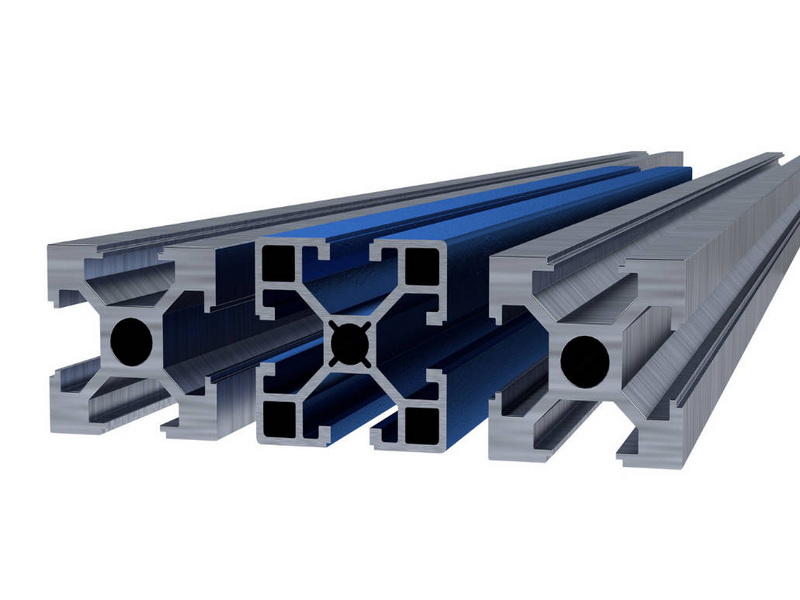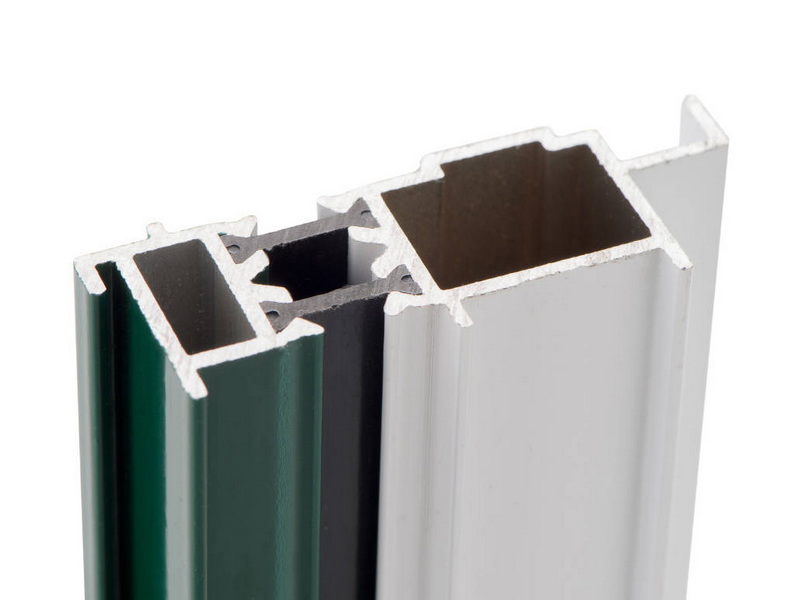English 




Views: 222 Author: Astin Publish Time: 2025-03-20 Origin: Site



Content Menu
● Introduction to Aluminum Extruded Profiles
>> Advantages of Aluminum Extruded Profiles
● Cutting Aluminum Extruded Profiles
>> Additional Tips for Cutting
● Installing Aluminum Extruded Profiles
>> Methods for Joining Aluminum Extrusions
>> Common Applications of Aluminum Extrusions
● Design Considerations for Aluminum Extrusions
● Surface Finishing and Treatment
>> Benefits of Surface Treatments
● FAQ
>> 1. What tools are best for cutting aluminum extruded profiles?
>> 2. How do I secure aluminum extrusions during cutting?
>> 3. What are the most effective methods for joining aluminum extrusions?
>> 4. What factors should I consider when designing with aluminum extrusions?
>> 5. How can I enhance the durability of aluminum extrusions?
Aluminum extruded profiles are versatile materials widely used in various industries due to their lightweight, durability, and ease of customization. These profiles can be shaped into complex forms, making them ideal for applications ranging from structural components to decorative elements. Understanding how to accurately cut and install aluminum extruded profiles is crucial for both DIY enthusiasts and professional engineers. This guide will delve into the techniques for cutting and installing these profiles effectively.

Aluminum extruded profiles are created by forcing aluminum alloy through a die to produce specific shapes. This process allows for the creation of a wide range of profiles, from simple tracks to complex H-profiles and molding profiles. Common applications include door frames, window frames, and structural components in buildings and machinery.
- Lightweight and Strong: Aluminum extrusions offer an excellent strength-to-weight ratio, making them ideal for applications where weight reduction is critical.
- Corrosion Resistance: Aluminum naturally forms a protective oxide layer, providing good corrosion resistance without additional coatings.
- Flexibility in Design: The extrusion process allows for complex shapes and designs, enabling customization for specific applications.
- Easy to Work With: Aluminum is relatively soft and easy to cut and join, making it accessible for both amateur and professional projects.
Cutting aluminum extruded profiles requires the right tools and techniques to ensure clean and accurate cuts. Here are some of the most effective methods:
- Circular Saw: Ideal for straight cuts on aluminum track extrusions and square profiles.
- Miter Saw: Perfect for making angled cuts, especially useful for door and window frame profiles.
- Band Saw: Suitable for cutting complex shapes like H-profiles and section channels.
- Hacksaw: A manual option for smaller projects or detailed work.
- Clamps: Essential for securing the aluminum during cutting to prevent movement.
- Safety Gear: Always wear safety goggles, gloves, and ear protection.
1. Measure and Mark: Accurately measure and mark the aluminum extrusion where the cut should be made. Double-check measurements for precision.
2. Secure the Profile: Clamp the aluminum extrusion firmly to prevent movement during cutting.
3. Choose the Right Blade: Use a blade specifically designed for cutting aluminum. For circular and miter saws, a carbide-tipped blade with a high tooth count is ideal.
4. Make the Cut: Align the blade with the marked line and slowly guide the saw through the aluminum extrusion. Apply steady pressure to avoid jagged edges.
- Maintain Tool Sharpness: Dull blades can cause the aluminum to tear or bend, leading to uneven cuts.
- Use Lubricants: Applying a lubricant like WD-40 or silicone spray can reduce friction and prevent the blade from binding.
- Cutting Speed: Adjust the cutting speed based on the saw type and material thickness. Faster speeds are generally better for thinner profiles.

Installing aluminum extruded profiles involves connecting them securely to form structures or assemblies. Here are some common methods:
1. M12 Screw: A reliable method for connecting joints that aren't frequently changed. It requires a tapped extrusion profile and an access hole.
2. Quick Connector: Offers quick assembly and easy adjustability without needing additional drilling after initial setup.
3. T-Slot Connections: Ideal for industrial-grade structures, using T-nuts and bolts for secure fastening.
4. Corner Brackets and Gussets: Used to join T-Slot extrusions at right angles, providing additional support.
5. Adhesive Bonding: Provides strong, flexible bonds suitable for applications requiring a seamless appearance.
- Choose the Right Profile Size: Ensure the profile size matches the load requirements of the structure.
- Consider Environmental Factors: Select profiles and joining methods that can withstand anticipated environmental conditions.
- Regular Maintenance: Inspect for wear, corrosion, or damage to ensure structural integrity.
- Structural Frames: Often used in building construction for door and window frames.
- Industrial Equipment: Used in machinery and conveyor systems due to their durability and ease of assembly.
- Automotive Components: Lightweight aluminum extrusions are used in vehicle frames and body parts.
- Furniture and Decor: Aluminum profiles are used in modern furniture designs for their sleek appearance and durability.
When designing with aluminum extrusions, several factors should be considered to ensure both functionality and ease of manufacturing:
- Uniform Wall Thickness: Helps maintain consistent material flow and reduces the risk of defects.
- Gradual Transitions: Essential for maintaining structural integrity and avoiding stress concentrations.
- Symmetrical Designs: Enhance manufacturability and performance by achieving uniform cooling rates.
- Thermal Expansion and Conductivity: Important for managing thermal stresses in applications involving temperature variations.
- CAD Software: Programs like SolidWorks and Autodesk Inventor are essential for designing complex aluminum extrusion assemblies.
- Prototyping: Creating prototypes can help identify potential issues before mass production.
The surface finish of aluminum extrusions not only improves their appearance but also enhances durability by providing better corrosion resistance. Common treatments include:
- Anodizing: Offers excellent corrosion resistance and aesthetic appeal.
- Powder Coating: Provides a durable, chip-resistant finish.
- Other Treatments: Such as chromate conversion coatings for additional protection.
- Enhanced Corrosion Resistance: Protects the aluminum from environmental degradation.
- Improved Aesthetics: Offers a wide range of colors and finishes to match design requirements.
- Increased Durability: Extends the lifespan of the aluminum extrusions by protecting against wear and tear.
Cutting and installing aluminum extruded profiles require careful planning, the right tools, and precise techniques. By understanding the various methods for cutting and joining these profiles, engineers and DIY enthusiasts can create durable, adaptable structures for a wide range of applications. Whether it's a simple DIY project or a complex industrial assembly, aluminum extruded profiles offer versatility and performance.

- Circular saws, miter saws, band saws, and hacksaws are commonly used for cutting aluminum extrusions. The choice depends on the complexity of the cut and the desired precision.
- Use clamps to firmly secure the aluminum extrusion to a workbench or sawhorses. This prevents movement and ensures a clean cut.
- Common methods include mechanical fastening (e.g., M12 screws, T-nuts), adhesive bonding, interlocking joints, welding, and snap-fit joints. The choice depends on the application's requirements.
- Consider uniform wall thickness, gradual transitions, symmetrical designs, thermal expansion, and conductivity. These factors enhance manufacturability and performance.
- Surface treatments like anodizing, powder coating, or chromate conversion coatings can improve corrosion resistance and aesthetic appeal.
[1] https://www.aluleader.com/blog/how-to-cut-aluminum-profile/
[2] https://blog.airlinehyd.com/connecting-extrusion-tutorials
[3] https://industrialmetalservice.com/metal-university/how-to-cut-extruded-aluminum/
[4] https://shop.machinemfg.com/10-effective-ways-of-joining-aluminum-extrusions-a-guide-for-product-designers/
[5] https://hermitageautomation.com/how-cut-aluminum-extrusion/
[6] https://technical.europe.misumi-ec.com/en/support/solutions/articles/76000046645-aluminum-extrusions-general-questions
[7] https://thecuttingexperts.com/blogs/news/how-to-cut-aluminum-extrusions
[8] https://www.youtube.com/watch?v=ECQhaxO4JIU
[9] https://www.youtube.com/watch?v=CwGimohCH8A
[10] https://www.youtube.com/watch?v=zf2QhB7r5kI
[11] https://www.bwcprofiles.co.uk/extrusion-academy/aluminium-extrusion-design-best-practices
[12] https://www.instructables.com/A-Simple-Method-to-Cut-Aluminum-Extrusion/
[13] https://www.zetwerk.com/resources/knowledge-base/aluminum-extrusions/manufacturing-custom-aluminum-extrusion-profiles/
[14] https://vention.io/resources/guides/t-slot-aluminum-extrusion-structure-design-guide-77
[15] https://www.impol.com/everything-you-need-to-know-about-aluminum-extrusion/
Top Aluminum Furnitures Manufacturers and Suppliers in Czech Republic
Top Aluminum Furnitures Manufacturers and Suppliers in Poland
Top Aluminum Furnitures Manufacturers and Suppliers in Belgium
Top Aluminum Furnitures Manufacturers and Suppliers in Finland
Top Aluminum Furnitures Manufacturers and Suppliers in Denmark
Top Aluminum Furnitures Manufacturers and Suppliers in Greece
Top Aluminum Furnitures Manufacturers and Suppliers in Portugal
Top Aluminum Furnitures Manufacturers and Suppliers in Austria
Top Aluminum Furnitures Manufacturers and Suppliers in Norway
Top Aluminum Furnitures Manufacturers and Suppliers in Sweden
